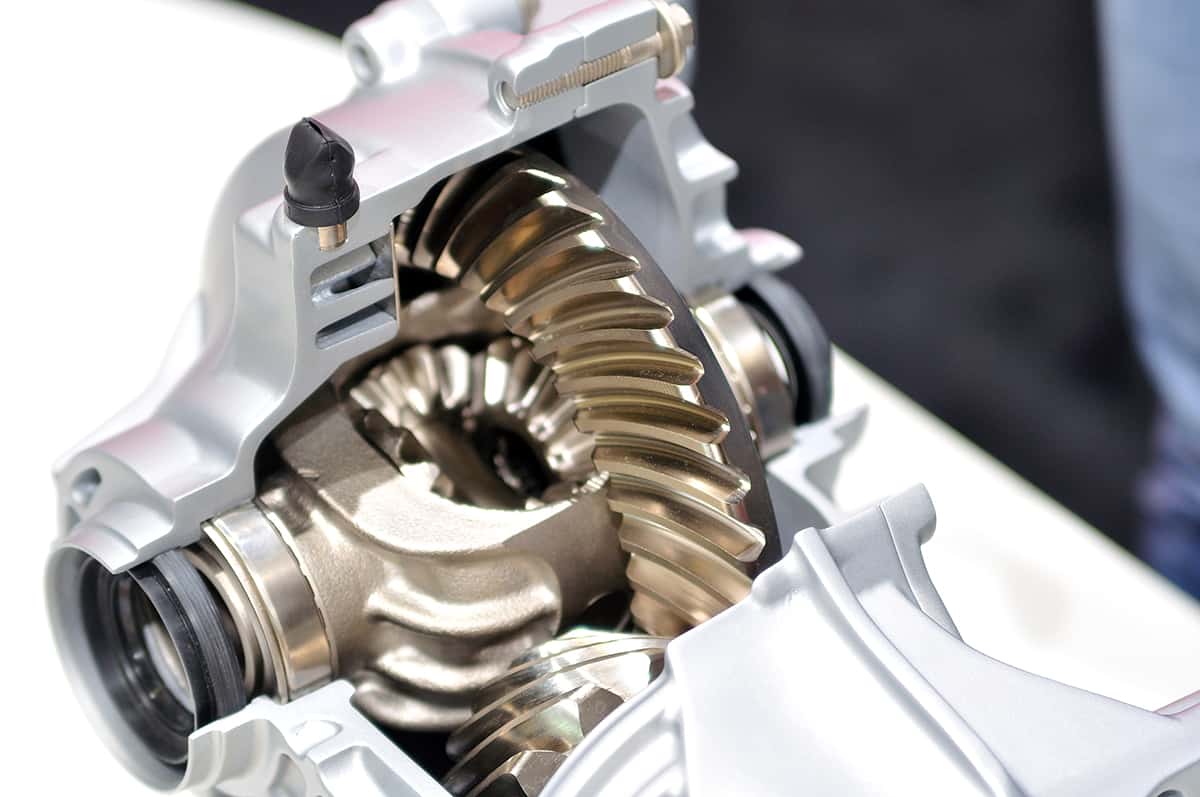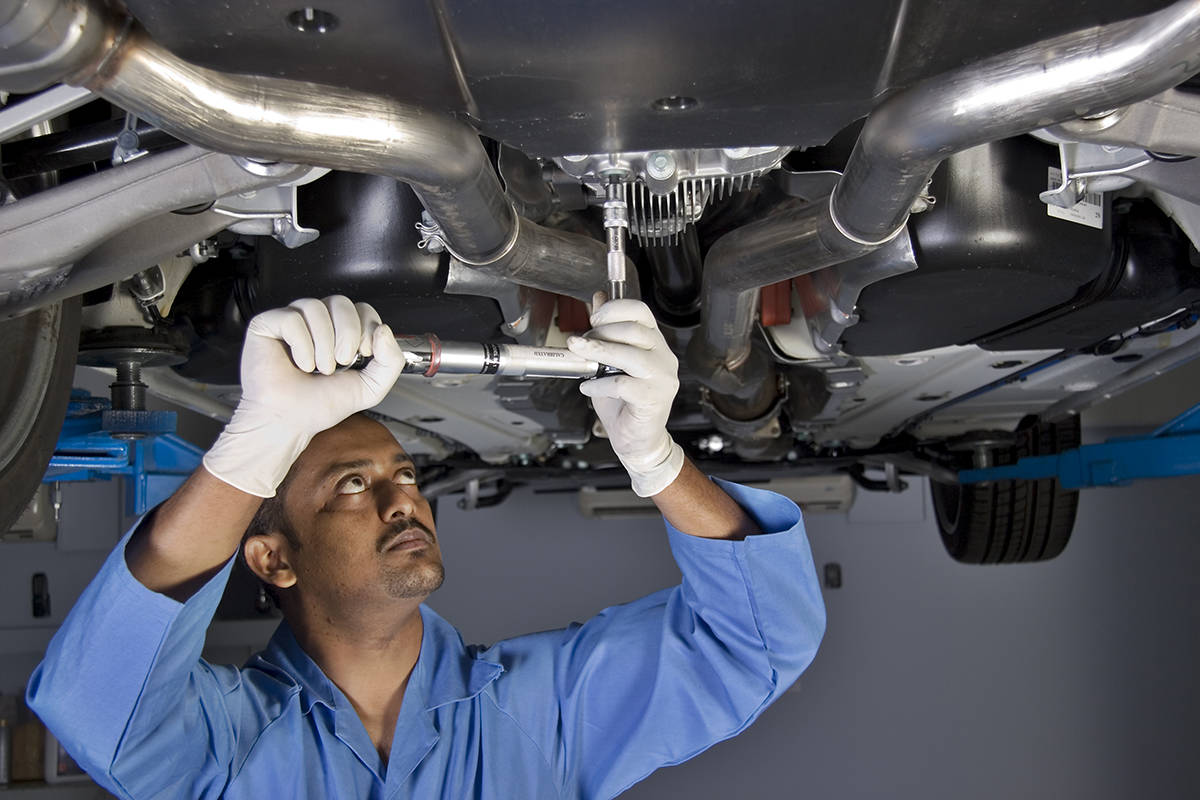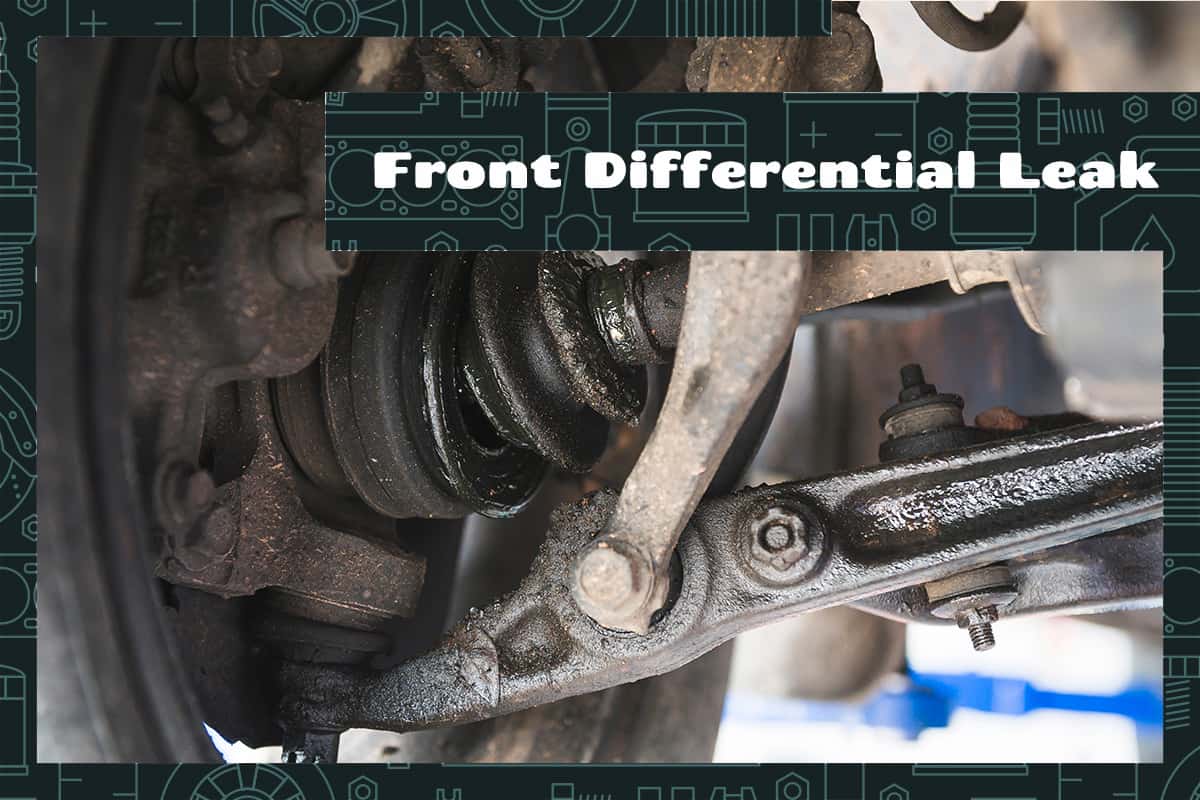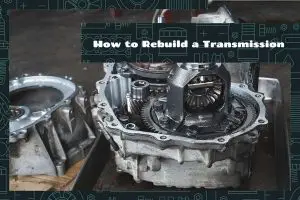Differentials often remain in the shadows of more talked-about parts like engines or brakes. However, when your vehicle starts showing signs of a front differential leak, suddenly, this underappreciated part grabs your attention. This issue is about ensuring smooth turns, proper power distribution to wheels, and maintaining overall vehicle health.
The most common signs of a leaking front differential include:
- Puddles or spots under the vehicle
- Unusual noises when turning or accelerating
- Decrease in vehicle performance or fuel efficiency
Your options include basic fixes like tightening loose bolts and plugs to unclog the vent/breather, while severe cases (e.g., a damaged differential housing) require a professional’s touch.
Continue reading to uncover the specifics of a front differential leak. We’ll help you recognize the early symptoms and root causes of this issue, as well as the best ways to address it.
A Breakdown of Differentials

Have you ever wondered how your car manages to turn corners so smoothly? Or why one tire doesn’t skid while the other spins just right? The unsung hero behind these actions is the differential.
Think of it as a magical gearbox located between the wheels, ensuring they spin at different speeds. This is especially handy when taking a turn, as the wheel on the inside of the turn has less ground to cover than the one on the outside.
Even though this guide focuses specifically on front differential leaks, it’s worth knowing the various types of differentials out there:
- Front Differential: Found in front-wheel-drive (FWD) cars, the front differential takes the engine’s power and sends it to the two front wheels. It’s all about giving your car that smooth front-pulling power.
- Rear Differential: The favorite for rear-wheel-drive (RWD) cars. It does the opposite of its front counterpart by channeling the engine’s power to the back wheels.
- Center Differential: This one’s the mediator for all-wheel-drive (AWD) and four-wheel-drive (4WD) vehicles. It divides power between the front and rear axles to create even distribution.
Signs of a Front Differential Leak
Your car’s front differential is a hard-working part, and like any busy bee, it can sometimes spring a leak. But don’t stress out just yet! Catching these leaks early can save you time, money, and maybe a smidge of pride.
1. Oil Puddles
If you’re spotting a thick, dark oil under the front of your vehicle, it could be from your front differential. This isn’t your usual engine oil leak; differential fluid has a distinctive, heavier feel.
2. Whining/Grinding Noises When Turning
If you’re cruising around and you hear a weird whining or grinding noise when taking turns, it’s likely the gears in your front differential complaining. The noise is often louder during acceleration.
3. Less Responsive Steering
Ever felt like steering just became your gym workout? If turning your wheel feels heavier than usual, it could be because of inadequate lubrication due to a differential fluid leak. Low fluid levels can make those turns feel like you’re wrestling a bear.
4. Excessive Vibrations
The differential allows your car to make smooth turns, and a leak can compromise this, causing your vehicle to have those weird jitterbug moments.
5. Dashboard Warning Lights
Some modern cars have a differential warning light. If it’s lit, it’s legit! Your car is telling you there’s a problem with the differential system, which could very well be a leak.
6. Strange Odors
Leaking differential fluid has a strong, distinctive odor, different from other car fluids. If there’s a burning smell after some highway driving, it might be the fluid getting too hot due to low levels.
Causes of a Front Differential Leak
While differentials are made to withstand the toughest situations, they’re not invincible. Here, we’ll go over the various reasons for why your front differential has sprung a leak.
1. Worn Out Seals
The seals prevent the fluid from escaping but can wear out over time. Driving conditions, temperature fluctuations, and even the simple passage of time can cause these seals to dry out, crack, or degrade.
2. Banged-Up Housing
Have you been off-roading or had a tiny misadventure with a curb? The impact can cause cracks or damage to the differential housing. A good knock can sometimes be all it takes for a leak to start.
3. Overfilled Differential
Yes, there is such a thing as too much love. Overfilling the differential with fluid can cause excess pressure, leading to leaks.
4. Faulty Breather
The breather is your differential’s way of letting off steam. If this vent gets clogged or malfunctions, pressure can build up inside the differential, pushing the fluid out and causing a leak.
5. Degraded Fluid
The differential fluid lubricates and cools the gears. As time goes on, the fluid can degrade and become less effective. This can lead to increased heat and pressure, which, you guessed it, can result in a leak.
6. Loose Bolts or Plugs
You’d be surprised how often this can be the culprit. Bolts or plugs that aren’t tightened properly can be an easy escape route for differential fluid.
7. Damaged Gasket
The gasket sits between the differential housing parts, keeping the fluid from escaping. But like those worn-out seals, gaskets too can get old and brittle. A failing gasket is an open invitation for the fluid to make a break for it.
8. Natural Wear and Tear
Nothing lasts forever. Just like any other car component, the differential can suffer from plain ol’ wear and tear. Prolonged usage, not changing the fluid regularly, or ignoring the small signs can lead to bigger issues.
Can You Fix a Leaking Front Differential?

A front differential leak can be caused by a bunch of things—from tiny missteps like overfilling to more obvious issues like damage from impact. Some leaks are annoying but fixable, especially if you’ve been bitten by the DIY bug. But then again, there are those leaks that scream “Call the pros!”
1. Check the Basics
- Tighten Those Bolts and Plugs: A quick turn of the wrench can seal minor leaks caused by loose fittings. It’s like making sure the cookie jar lid is on tight.
- Peek at the Vent: Ensure the vent isn’t blocked or clogged. Sometimes, a good old clean-up can resolve minor leak issues.
- Gasket Inspection: If the gasket is showing its age, a replacement might be on the cards. Don’t worry; it’s like changing a worn-out shoe sole.
2. Replacing Seals
Got worn out or damaged seals? Here’s a fun fact: they’re replaceable! You’ll need:
- A seal puller tool
- A new seal
- Patience
It’s a bit tricky, the more hardcore car enthusiasts should know what to do. Remember, if you’re not comfy doing this, it’s cool to call in the cavalry (i.e., a pro mechanic).
3. Fluid Check
Right Level, Right Time: Ensure the differential isn’t overfilled. Drain some if needed. Also, if the fluid looks more like grandma’s old stew than its smooth self, it might be time for a change.
Quality Counts: When refilling, always opt for the recommended differential fluid.
4. Housing Repairs
Minor cracks or damages to the housing? Sealants available in auto stores can do the trick. Apply as per instructions, let it set, and you might just patch up that leak. Please note that this is only a temporary fix.
When to Call a Mechanic
- Major Housing Damage: If the differential housing looks like it had a tiff with a wrecking ball, no DIY will save the day. It’s pro time!
- Internal Gear Issues: Hearing weird noises or feeling vibrations? That’s your differential telling you something’s off on the inside. Those internal gears are touchy subjects and are best left to experts.
- Persistent Leaks: Tried everything, and that leak still won’t bid adieu? Might be a deeper issue that only eagle-eyed mechanics can spot.






